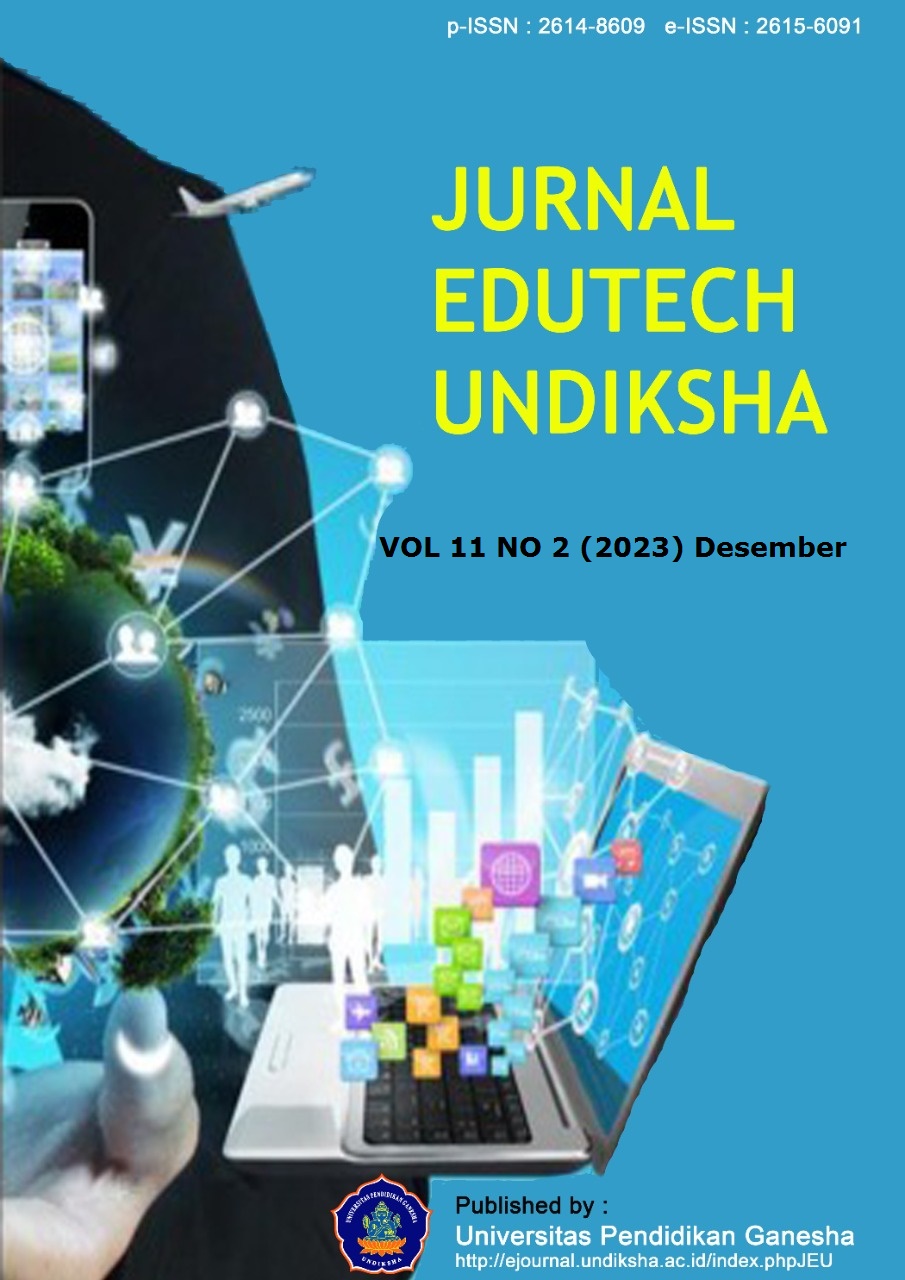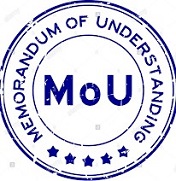Media Smart Apps Creator Based on the SAS (Synthetic Structural Analytical) Method to Improve Phoneme Pronunciation for Lower Grade Students
DOI:
https://doi.org/10.23887/jeu.v11i2.65661Keywords:
Learning Media, Smart Apps Creator, Structural Analytic Synthetic, Phoneme PronunciationAbstract
Learning Indonesian makes students less interested in participating in learning because of the use of inappropriate media and learning methods. This causes students to be passive in the learning process, resulting in low student learning outcomes. Teachers should use interesting media to motivate students to improve learning outcomes. This research aims to create a smart app creator media based on synthetic, analytical structural methods to improve the phoneme pronunciation skills of low-grade students. This research includes development research using the Borg and Gall model. The research subjects were first-grade elementary school students, class teachers, and a team of experts. Data analysis techniques use quantitative and qualitative descriptive. The research results obtained were a media test of 97.5% and a material expert of 90%. The effectiveness of the SAS method-based smart apps creator media for improving phoneme pronunciation can be seen from the increase in pretest and post-test scores on the N-Gain Test. The increase in skills obtained from the average pretest (67.22) and posttest (88.56) scores on the small-scale test was 21.38. The large-scale test also experienced an increase in the average pretest (65.67) and posttest (85.43) scores of 19.76. Based on this, it can be concluded that the smart media creator app based on the SAS method can improve students' skills in pronouncing phonemes.
References
Aida, S., Suprapti, A., & Nasirun, M. (2018). Improving Initial Reading Skills Through Synthetic Analytical Structural Methods Using Audio Visual Media. Potentia Scientific Journal, 3(2), 56–63. https://doi.org/10.33369/jip.3.2.111-118.
Anwar, MFN, Wicaksono, AA, & Pangambang, AT (2022). Using the SAS Method Assisted with Letter Card Media to Improve Beginning Reading Skills. Musamus Journal of Primary Education, 5(1), 57–64. https://doi.org/10.35724/musjpe.v5i1.4367.
Arimbawa, IGPA (2021). Application of Word Wall Game Quiz Combined with Classroom to Increase Biology Learning Motivation and Achievement. Indonesian Journal of Educational Development (IJED), 2(2), 324–332. https://doi.org/10.5281/zenodo.5244716.
Aristhi, NPS, & Manuaba, IBS (2020). Experiential Learning Model Assisted by Image Media on Elementary School Students' Poetry Writing Skills. Pulpit Science, 25(3), 327–337. https://doi.org/10.23887/mi.v25i3.26096.
Arsyad, A. (2017). Instructional Media. Rajawali Press.
Audia, C., Yatri, I., Aslam, Mawani, S., & Zulherman. (2021). Development Of Smart Card Media For Elementary Students. Journal Of Physics: Conference Series, 1783(1), 012114. https://doi.org/10.1088/1742-6596/1783/1/012114.
Fahlevi, R., & Aminatun, T. (2023). Development of Smart Apps Creator Learning Media Using Problem-Solving Learning Models on Global Warming Materials to Improve Critical Thinking and Problem-Solving Ability. Journal of Science Education Research, 9(9), 7221–7230. https://doi.org/10.29303/jppipa.v9i9.4311.
Treasure. (2018). Development of Pop-Up Book Media to Improve Elementary School Students' Narrative Essay Writing Skills. Creative Journal: Journal of Basic Education, 8(2), 92–102. https://doi.org/10.15294/kreatif.v8i2.16499.
Heliawati, L., Pebriani, F., & Ardianto, D. (2022). Smart Apps Creator 3 Interactive Multimedia Based on Stream to Improve Students' Scientific Literacy During the Covid-19 Pandemic. Journal of Innovation in Educational and Cultural Research, 3(4), 617–624. https://doi.org/10.46843/jiecr.v3i4.277.
Khoridah, F, Prasetiyawati, D., & Baedowi, S. (2019). Analysis of the Application of the SAS (Synthetic Structural Analytical) Method in Beginning Writing Ability. Journal for Lesson and Learning Studies, 2(3), 396–403. https://doi.org/10.23887/jlls.v2i3.19899.
Khoridah, Faizatul, Prasetiyawati, D., & Baedowi, S. (2019). Analysis of the Application of the Sas (Synthetic Structural Analytical) Method in Beginning Writing Ability. Journal for Lesson and Learning Studies, 2(3), 396–403. https://doi.org/10.23887/jlls.v2i3.19899.
Larashinta, D. (2018). Application of the Sas (Synthetic Structural Analytical) Method in Beginning Reading Learning for Grade 1 Students Mi Ma'Arif Nu Sokawera Padamara Purbalingga Academic Year 2017/2018. 109. http://repository.iainpurwokerto.ac.id/4353/2/DESSY LARASSHINTA_PENERAPAN SAS METHOD %28STRUCTURAL SYNTHETIC ANALYTICS%29 IN READING LEARNING P.pdf.
Mahuda, I., Meilisa, R., & Nasrullah, A. (2021). Development of Android-Based Mathematics Learning Media Assisted by Smart Apps Creator in Improving Problem Solving Abilities. AKSIOMA: Journal of Mathematics Education Study Program, 10(3), 1745. https://doi.org/10.24127/ajpm.v10i3.3912.
Mariyana, D. (2020). Increasing Science Learning Achievement about the Solar System through the Implementation of the TAI (Team Assisted Individualization) Cooperative Learning Model for Class VI Elementary School Students. Social, Humanities, and Educational Studies (SHEs): Conference Series, 3(4), 787–792. https://doi.org/10.20961/shes.v3i4.54403.
Moreira, IX, Pereira, S., & Gusmão, H.F. (2018). The Influence of Concrete Instructional Media on Learning Achievement. ISCE: Journal of Innovative Studies on Character and Education. Instituto Superior Cristal Dili-Timor Leste, 2(1), 104–114. http://iscjournal.com/index.php/isce/article/view/25.
Nurcholis, RA, & Istiningsih, G. (2021). Problems and Solutions for the Reading and Writing Literacy Program for Lower Class Students in Public Elementary Schools. Scientific Journal of the Educational Profession, 6(2), 189–195. https://doi.org/10.29303/jipp.v6i2.206.
Oktaviani, D., & Amini, R. (2023). Development of Integrated Thematic Learning Media Using Smart Apps Creator Based on a Scientific Approach in Class III Elementary School. Basicedu Journal, 6(6), 10298–10306. https://doi.org/10.31004/basicedu.v6i6.4883.
Pane, AN, Nyeneng, IDP, & District, I. Wayan. (2020). the Effect of Predict Observe Explain Learning Model Against Science Process Skills of High School Students. Journal of Mathematics and Science Education, 11(1), 111–119. https://doi.org/10.26418/jpmipa.v11i1.32892.
Pranata, EA, Christiana, E., & Chun – I, K. (2018). Reading and Writing Skills of Hanzi Runner Characters in China Wedding Division at Varawedding Company. Century: Journal of Chinese Language, Literature and Culture, 6(2), 18–29. https://doi.org/10.9744/century.6.2.18-29.
Purwanto. (2013). Evaluation of Learning Outcomes. Student Library.
Purwanto & Ngalim. (2017). Principles and Techniques of Teaching Evaluation. PT. Rosdakarya Teenager.
Rachmavita, FP (2020). Interactive media-based video animation and student learning motivation in mathematics. Journal of Physics: Conference Series, 1663(1), 0–6. https://doi.org/10.1088/1742-6596/1663/1/012040.
Silfiyah, A., Ghufron, S., Ibrahim, M., & Mariati, P. (2021). The Effect of Applying the SAS (Synthetic Structural Analytical) Method on Students' Beginning Reading Ability in Elementary Schools. Basicedu Journal, 5(5), 3541–3550. https://doi.org/10.31004/basicedu.v5i5.1321.
Sugiyono. (2017). Educational Research Methods Quantitative, Qualitative and R&D Approaches. Alphabet.
Suhartati, O. (2021). Flipped Classroom Learning Based on Android Smart Apps Creator (SAC) in Elementary Schools. Journal of Physics: Conference Series, 1823(1), 012070. https://doi.org/10.1088/1742-6596/1823/1/012070.
Suhartati, Oktri. (2021). Flipped Classroom Learning Based on Android Smart Apps Creator (SAC) in Elementary Schools. Journal of Physics: Conference Series, 1823(1). https://doi.org/10.1088/1742-6596/1823/1/012070.
Supriyono. (2018). The Importance of Learning Media to Increase Student Interest in Learning. Elementary Education, 2(1), 43–48. https://doi.org/10.26740/eds.v2n1.p43-48.
Suryani, N. et al. (2018). Innovative Learning Media and Its Development. Rosdakarya Teenager.
Wardiyati, H. (2019). Application of the Sas (Synthetic Structural Analytical) Method to Improve the Reading Skills of Low Grade Students in Target Schools. PAJAR JOURNAL (Education and Teaching), 3(6), 1083–1091. https://doi.org/10.33578/pjr.v3i6.7837.
Widiyatmoko, A., Utaminingsih, S., & Santoso. (2021). Android-based math learning to improve critical thinking. Journal of Physics: Conference Series, 1823(1). https://doi.org/10.1088/1742-6596/1823/1/012091.
Zainuddin, N. (2018). Efforts to Improve Indonesian Speaking Skills Through the Application of the Debate Method for Class V Students of SDN 09 Mattekko, Bara District, Palopo City. Pedagogical Journal of Islamic Elementary School, 1(2), 139–150. https://doi.org/10.24256/pijies.v1i2.401.
Downloads
Published
How to Cite
Issue
Section
License
Copyright (c) 2023 Farikha Maghfiroh, Panca Dewi, Trimurtini

This work is licensed under a Creative Commons Attribution-ShareAlike 4.0 International License.
Authors who publish with the Jurnal EDUTECH Undiksha agree to the following terms:
- Authors retain copyright and grant the journal the right of first publication with the work simultaneously licensed under a Creative Commons Attribution License (CC BY-SA 4.0) that allows others to share the work with an acknowledgment of the work's authorship and initial publication in this journal.
- Authors are able to enter into separate, additional contractual arrangements for the non-exclusive distribution of the journal's published version of the work (e.g., post it to an institutional repository or publish it in a book), with an acknowledgment of its initial publication in this journal.
- Authors are permitted and encouraged to post their work online (e.g., in institutional repositories or on their website) prior to and during the submission process, as it can lead to productive exchanges, as well as earlier and greater citation of published work. (See The Effect of Open Access)









